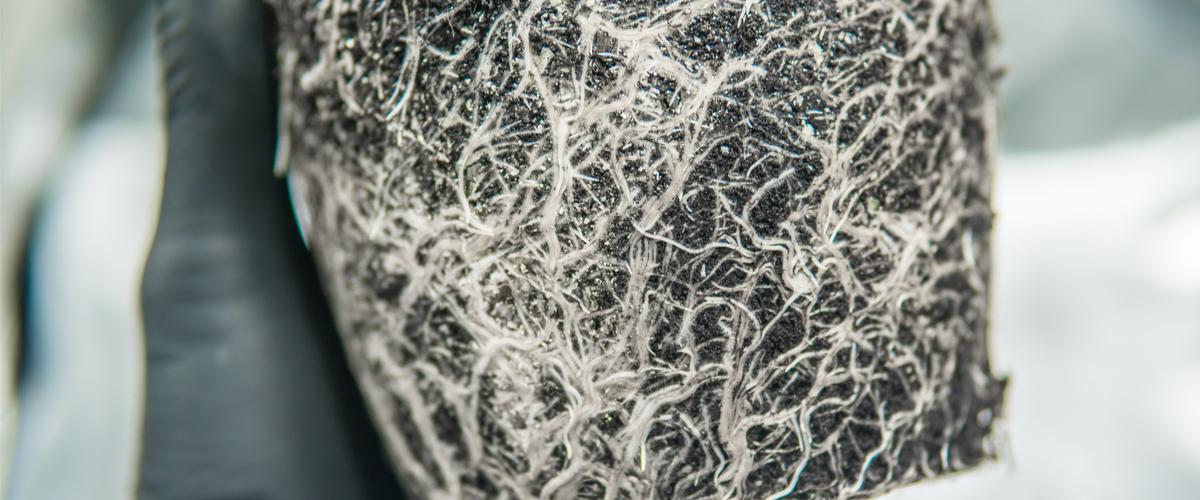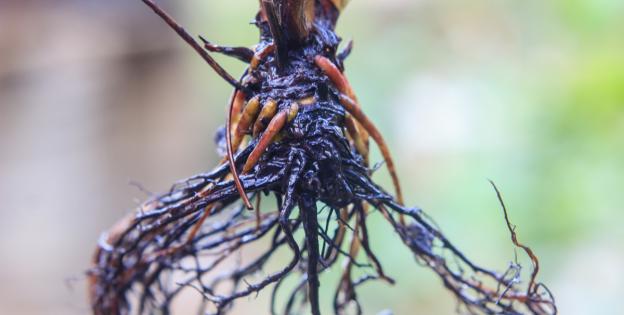- The roots of your cannabis plants deserve the greatest consideration: they offer countless benefits in every phase of development, so they need to be kept as healthy as possible at all times.
- In this article we remind you of the vital multifunctional and synergistic role of the roots, and we share our top tips on how to keep them in top condition during the full life cycle of your cannabis plants.

When new growers take up this fascinating and enriching activity, they aren't often aware of the importance of the correct development and overall health of the plants' radicular mass.
The roots constitute the digestive system of the cannabis plants. And, like any other living creature, when plants cannot feed properly they can develop nutrient deficiencies, which can lead to significant weakening of their immune system and subsequent slowdown of their overall development, finally resulting in a slow but certain death.
Maybe the fact that they're underground and therefore out of sight is the reason why we forget about their vital multifunctional and symbiotic role in every phase of development.
The roots: a vital multifunctional machine
As explained above, the roots (also known as radicular system or radicular mass) are in fact the digestive system and the spinal column of the cormophyte plants. These are the plants differentiated into roots, shoots and leaves, which include the cannabis plants. Roots are responsible for the optimum nutrition of plants as they facilitate the uptake and assimilation of the nutrients found in the soil or substrate.
The radicular system has three main functions that make it comparable to the immune system in humans: firstly, it ensures hydration and nutrient supply; secondly, it firmly anchors the plants to the soil; and thirdly, it stores food for times of nutrient deficiency or drought stress.

Roots are composed of four main parts, from top to bottom: the primary root, which is the first to develop and where lateral roots form; the zone of maturation, where root hairs appear in order to absorb mineral salts and water, making this the main area of contact between the plant and the ground; the meristematic zone, which includes the apical meristem responsible for cell growth and therefore root elongation; and lastly the root cap, which eases the movement of the root tip through the soil and so protects it from breaking.
Cannabis plants mainly grow taproots but can also occasionally develop adventitious roots during cutting propagation. These roots are located at the top of the stem and develop accidentally as a result of this propagation technique.
Healthy and vigorous roots at every stage of cannabis cultivation
The development of a healthy and vigorous radicular system is essential for plants to become strong, grow quickly, and eventually deliver a productive, top-quality crop.
Growth phase
The development of the radicular system of your cannabis plants requires special attention during the growth phase: the better the development of the plants' vegetative structure during this time, the greater their yielding capacity, and the stronger their immune system so they'll be better equipped to fight pathogens or parasites.
Before you start growing, you need to ensure that you have a high-quality substrate that is rich in nutrients. It is essential to use fresh soil that contains components that facilitate soil aeration, drainage, and some moisture retention (for instance perlite, sphagnum, coco coir, white peat, etc.)

The soil is the living place of millions of beneficial microorganisms that protect the radicular mass, promote its development, and maintain its equilibrium. Before planting the seedlings in the soil, it's best to add trichoderma, endomycorrhizae and bacteria like rhizobacteria. These organisms regulate and protect the substrate, and they're incredibly effective!
You also need to ensure that your soil has good breathing capacity so it doesn't become too compact or waterlogged, which would hinder the movement of the roots through the soil and could eventually suffocate them.
Rookie growers have a tendency to water their plants in excess, and often end up with clogged soils which can hinder plant growth and lead to weaker roots that end up rotting. A soil that's too wet also encourages the appearance of fungi and parasites; and sets plants off to a bad start for their future development. Therefore good irrigation management is key so that you don't end up with plants that look fragile and diseased from the get-go.
As for containers, best to use geotextile pots that facilitate substrate oxygenation. It's crucial to fully understand the soil's respiratory cycle, i.e. the alternating mechanisms between a dry and a wet soil.
If your plants are watered properly, their roots will develop to the best of their abilities. This is essential to prevent the appearance of insects or fungi (especially Pythium and Fusarium).
The reverse situation can also be detrimental to your plants: a soil that's too dry can produce drought stress (i.e. water and nutrient deficiency), which can lead to a weakened immune system and to the appearance of pests. Finding a balance between these two extreme situations is vital for the optimum development of the radicular mass.
It is important to pay special attention to the time when the seedlings are developing their first roots. You need to provide them with a stable climate, that is, a humidity level between 75 and 80%, and a temperature between 23 and 28ºC.
It is best not to use root stimulators during the first 8-10 days of growth. You need to wait until the plants reach at least 10-15 cm in height, when they'll have already developed at least 1 or 2 sets of leaves. From that moment on, you need to adjust the water pH between 6.0 and 6.2 and then add 0.2 – 0.4 ml/L root stimulator, depending on the specific product concentration.
The recommended frequency of application is once a week throughout the whole life cycle of your plants (during both the vegetative and the flowering periods). In week 2 you'll need to increase the dosage to 0.8 – 1 ml/L, always with pH levels between 6.0 and 6.2, and continue increasing the dosage gradually from week 3 until you reach a concentration of 1.8 – 2 ml/L.

By week 3 the humidity level should be close to 65%, with a temperature between 22 and 26ºC. Gradually increase the dosage up to 3.6 – 4 ml/L, this time with a pH level close to 6.2 – 6.4 (end of the growth phase).
In order to prevent thermal shock, the water temperature must be the same as, or close to, the room temperature in your grow space.
You need to be aware of the importance of being rigorous during this stage of development because the essential elements for the correct evolution of your plants are at stake at this point. The plants' immune system is really vulnerable in this phase, and a successful vegetative period guarantees the development of healthy and vigorous plants that will eventually produce abundant top-quality cannabis flowers. In a nutshell, this is a beneficial chain reaction at all levels.
Flowering phase
So after your cannabis plants have successfully developed a solid structure with a strong immune system thanks to a good management of their growth phase, it's time to take care of the flowering phase.
Everything is much simpler during this period: you only need to continue with the same watering regime and add 4 ml/L root stimulator to your nutrient solution once a week. You'll need to completely stop using fertilisers for cannabis and root and flowering stimulators when you flush your plants' roots during the last 15-20 days of the cycle. By then all you'll have left to do is harvest the fruits of your labour...




Comments from our readers
Read comments in other languages:
Did you like this post?
Your opinion about our seeds is very important to us and can help other users a lot (your email address won't be made public).